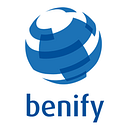6 steps to ensure your multigenerational workforce are getting the most out of their benefits
While every employee has their wants and needs depending on their life circumstances, benefits regarding health and well-being are undeniably essential for all ages. According to the U.S. Bureau of Labor Statistics, five generations are currently active in the world’s workforce, a unique phenomenon partly caused by people waiting longer to retire.
For employers, this means they must adapt for multigenerational workforces when creating and adjusting their benefit programs. Still, it’s not until now, as younger generations enter the workforce, that, the total reward package including benefits, has gained more defined traction. The cost-of-living crisis and increased pressure on individuals and families affect us all at work, whether in the absenteeism required to look after sick children or mental health for you or a loved one.
According to the Society for Human Resource Management study, well-being programs help companies reduce absenteeism, improve productivity, and increase employee engagement. This is why creating employee health and well-being programs is vital, as they support employees to manage stress, improve physical health, and maintain a work-life balance.
Building a multigenerational employee health and well-being program that effectively supports the diverse needs of different age groups requires careful planning, implementation, and monitoring. Here are some practical steps to follow:
Assess their needs
You must understand the needs, preferences, and behaviors to tailor suitable health and well-being benefits programs for a multigenerational workforce. Start by, considering the different age groups in your company and the various health and wellness needs. Then, gather data from multiple sources such as employee surveys, focus groups, or interviews about health status, interests, feedback, or satisfaction with the employee’s health and well-being needs. The data collected could also include information on health risks, chronic health conditions, mental health concerns, and overall well-being.
Set goals and objectives
With the feedback collected from above, you can then determine what you want to achieve, such as improving mental health or increasing physical activity or offering different types of insurances available. You can now start identifying the critical health and well-being goals and objectives based on the data gathered. It will help you if these goals are specific, measurable, attainable, relevant, and time-bound, think SMART.
Hone in on the right benefits
Time to develop a comprehensive program that addresses employees’ identified health and well-being needs across different generations. The program should include various activities that promote physical, mental and emotional well-being.
Examples of actions include but are not limited to:
- Health screenings
- Exercise classes
- Stress reduction workshops
- Mental health support
- Healthy eating programs
- Smoking cessation programs
Time to implement
Once the packages are viable, implement them by communicating the program goals and activities to employees across different generations. Ensure they are accessible and inclusive of all employees, regardless of age, gender, or physical ability.
Monitor the actual use
Collect data on program participation, health outcomes, and employee satisfaction. Analyze the data regularly to identify areas of success and areas for improvement. For example, if participation rates are low among a particular age group, consider changing the program or specific benefits to better meet their needs and preferences.
Communicate
Share the program’s results with stakeholders, employees and other interested parties. Use the data to demonstrate the program’s effectiveness and identify improvement areas. Celebrate successes and communicate the program’s impact on employee health and well-being. Be sure to encourage open feedback and collaboration for future programs, so employees feel they can participate in the changes and access programs relevant to them in the short, medium and long term.
This all sounds great, but wondering how to implement it with an already stretched HR team? Through using a digital HR platform, it grants you the ability to understand your employee needs, preferences, and behaviors. By accessing real-time data, you can then tailor a health and well-being program with the data collected from various sources, including employee surveys, benefits take-up or focus groups that ask about health status, interests, feedback, or satisfaction and be able to monitor its efficacy.
Originally published at https://blog.benify.com
